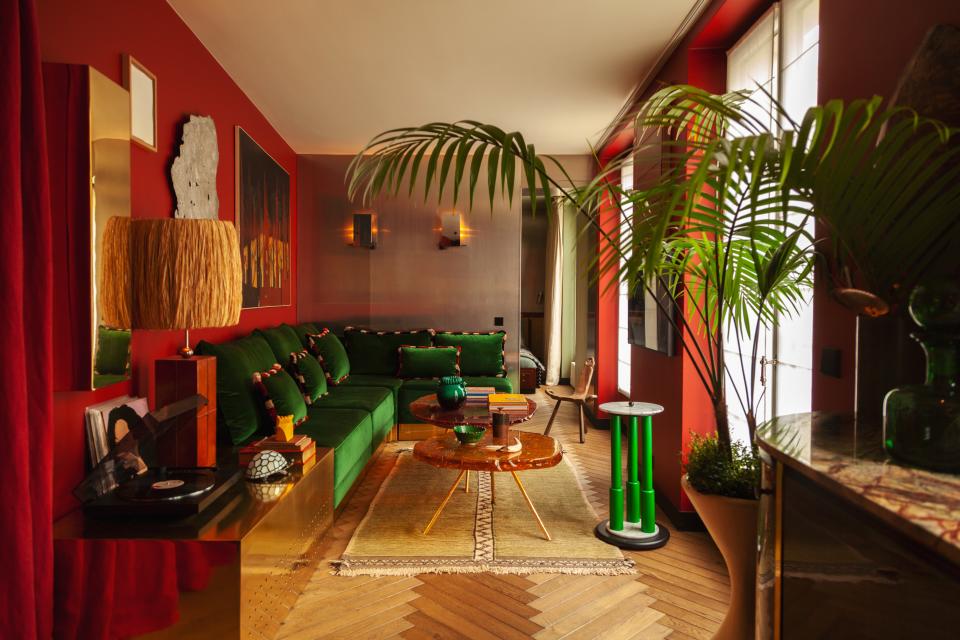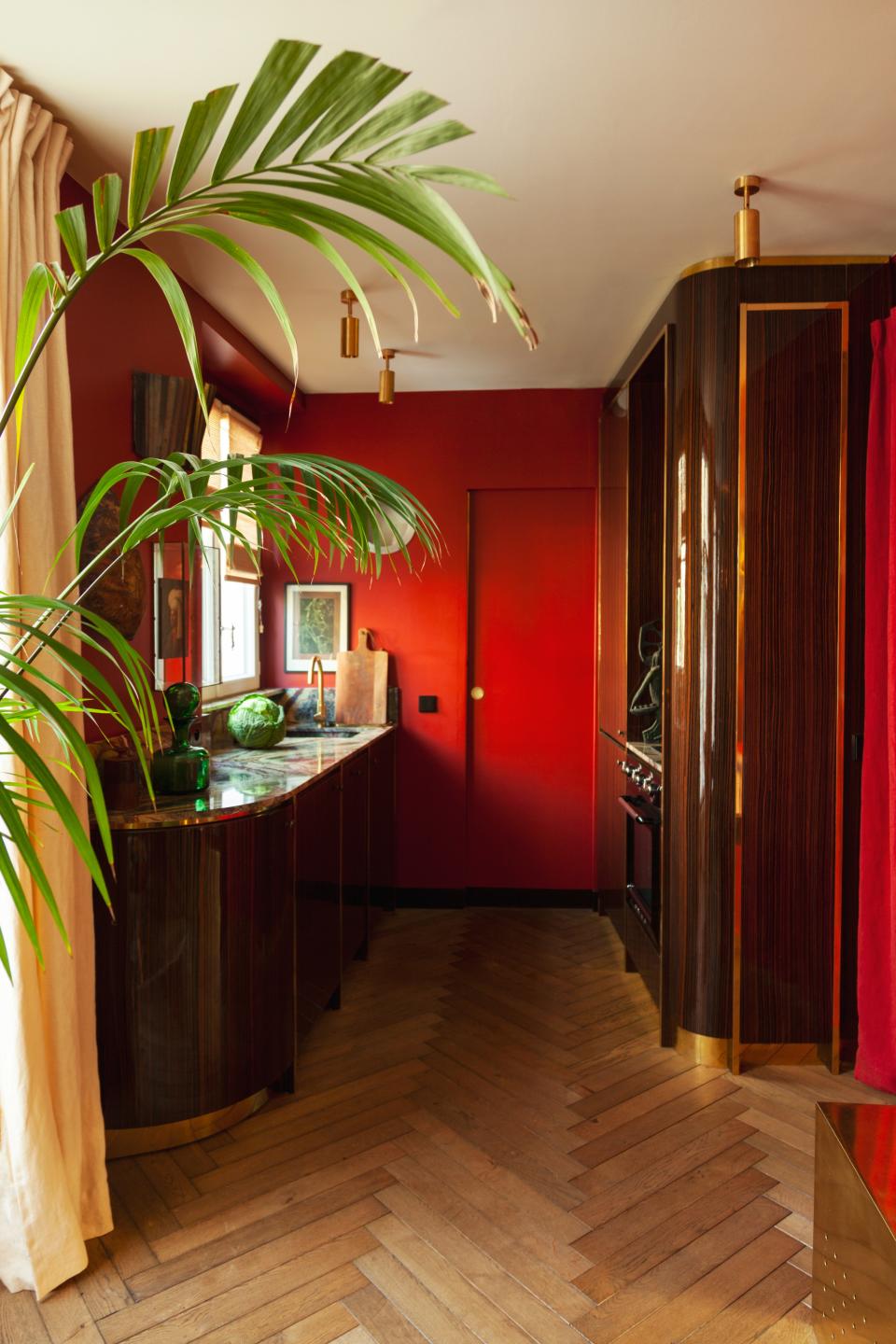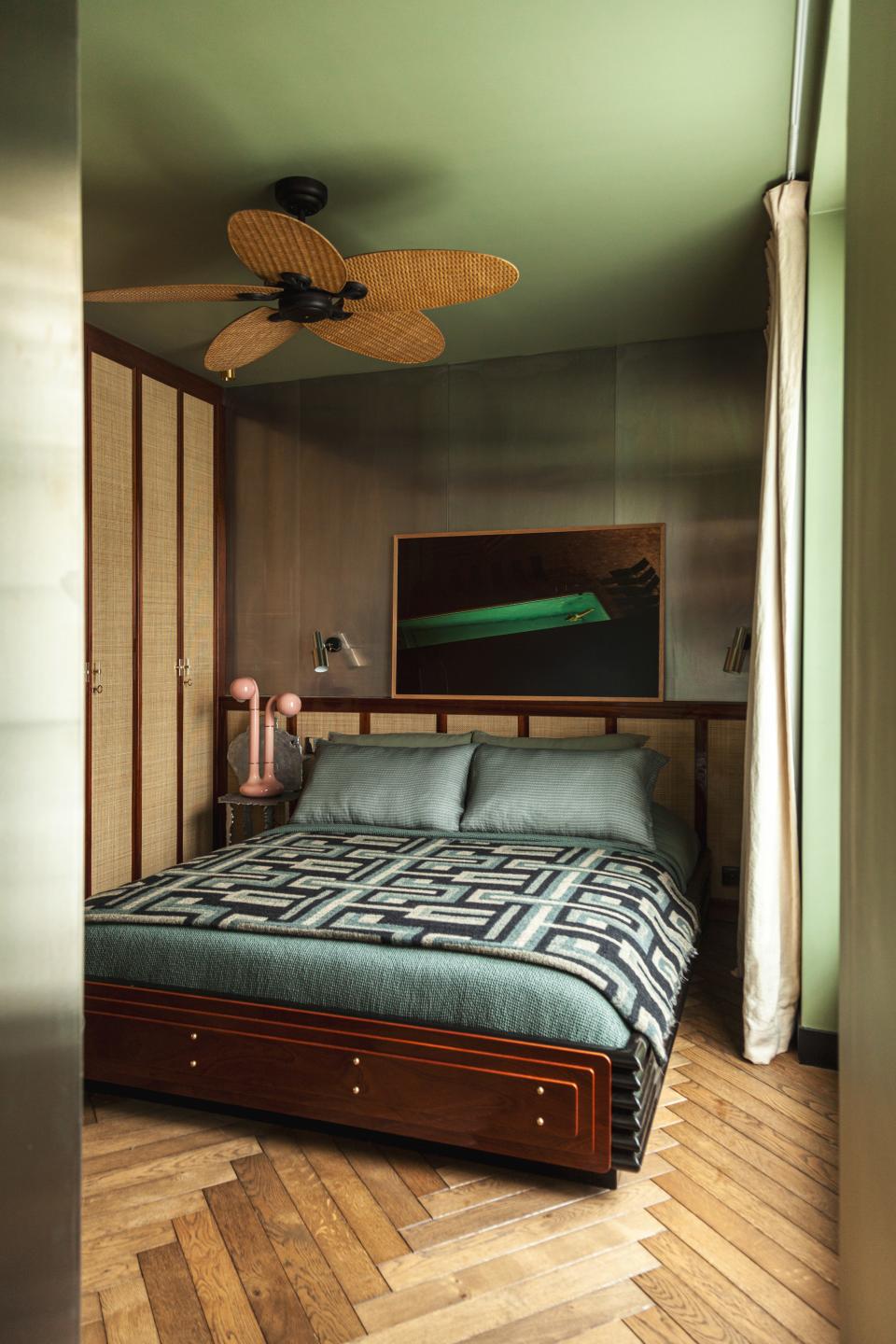Hugo Toro Created a Travel Diary in the Form of His 344-Square-Foot Parisian Apartment

“Since my childhood, I’ve been passionate about textures and colors,” says interior designer Hugo Toro. “My double culture with a French father and a Mexican mother, and my studies between Europe and the United States, are my main sources of inspiration. I like cozy places. I don’t want to live or create spaces that look and feel like museums.”
The young creative reflected these references and philosophy in his apartment, which is located in the lively and booming 10th arrondissement in the east of Paris. “It is a neighborhood in transformation, which is full of life, with coffee shops and young people all over,” Hugo says.

Located on the second floor of a three-story 1930s building, the 334-square-foot apartment was completely transformed. “I wanted to create an atypical and eclectic place, as if it were a travel diary,” the designer says. The space has five main windows, and consists of a living room, kitchen, bedroom, closet, and bathroom. With decor reminiscent of an Orient Express cabin taking travelers from Paris to Mexico, the home is adorned with objects that have a lot of sentimental value. The place “is like a personal diary” for Hugo. “I love to welcome my friends here, so the objective was to give life to a space that would be immediately warm, where everybody would feel good.”

One of the biggest challenges consisted of removing all the walls and reimagining the layout. “Before I bought it, the apartment had been occupied by the same family for 60 years, without any changes,” Hugo says. “So I had to do a complete renovation. The work lasted six months, much more than the design phase, which was very quick.”

Hugo chose two complementary colors: red and green (from emerald to pale green) as a nod to renowned Mexican architect Luis Barragán. “I wanted to create a bold yet cozy architecture, and to play with contrasts through raw and noble materials,” says Hugo. The lacquered wood and aluminum—often used in boats and trains—further evoke the concept of traveling, while also strengthening the feeling of depth and amplifying the light.
“For me, Mexico is a mix of geometric forms and cozy ambiances that I like to re-create in the spaces I design,” says Hugo, who has never lived in the country but heard about it on a daily basis thanks to his mother. “Mexico also has a musicality—I grew up listening to Chavela Vargas’s songs—and the food…I love spices and smells from the plates cooked by my grandmother.”

Several decorative elements play tribute to Hugo’s fascination with Mexico. The green sofa (created by Hugo himself) with a velvet Pierre Frey fabric is a reference to the Aztec god Quetzalcoatl, while the red hues throughout are evocative of artist Diego Rivera’s color palette. The shapes that make up the base of the bed were also inspired by Aztec geometries. Some of Hugo’s favorite pieces of furniture include the coffee table by Hélène de Saint Lager, the pink ceramic lamp by Entler Studio—which reminds the interior designer of his student life in Los Angeles—and the Fuseau planter by Willy Guhl for its sculptural aspect.

“I sympathized with the previous owner, who wanted the apartment to be ‘in good hands,’” Hugo says. “So when the work was done, I took some pictures and sent them to her. She really liked how I transformed the space. This apartment is like a train that left from Paris and made many stops in Mexico.”
Hugo’s Picks
Insta feeds to follow: Christopher Michaut @mr.bacchus
Home decor shops: Galerie Gram in Saint-Ouen, France
Destinations for design inspiration: Istanbul, Oaxaca, Vienna, and Paris
Dream buys: A cabin in the woods
Favorite detail in the apartment: The porthole in the bathroom (a reference to Charlotte Perriand)
Biggest design inspirations: My dreams
Favorite thing about your neighborhood: The Buttes-Chaumont park
Last thing you had delivered: An ashtray by Tommaso Barbi
Originally Appeared on Architectural Digest

